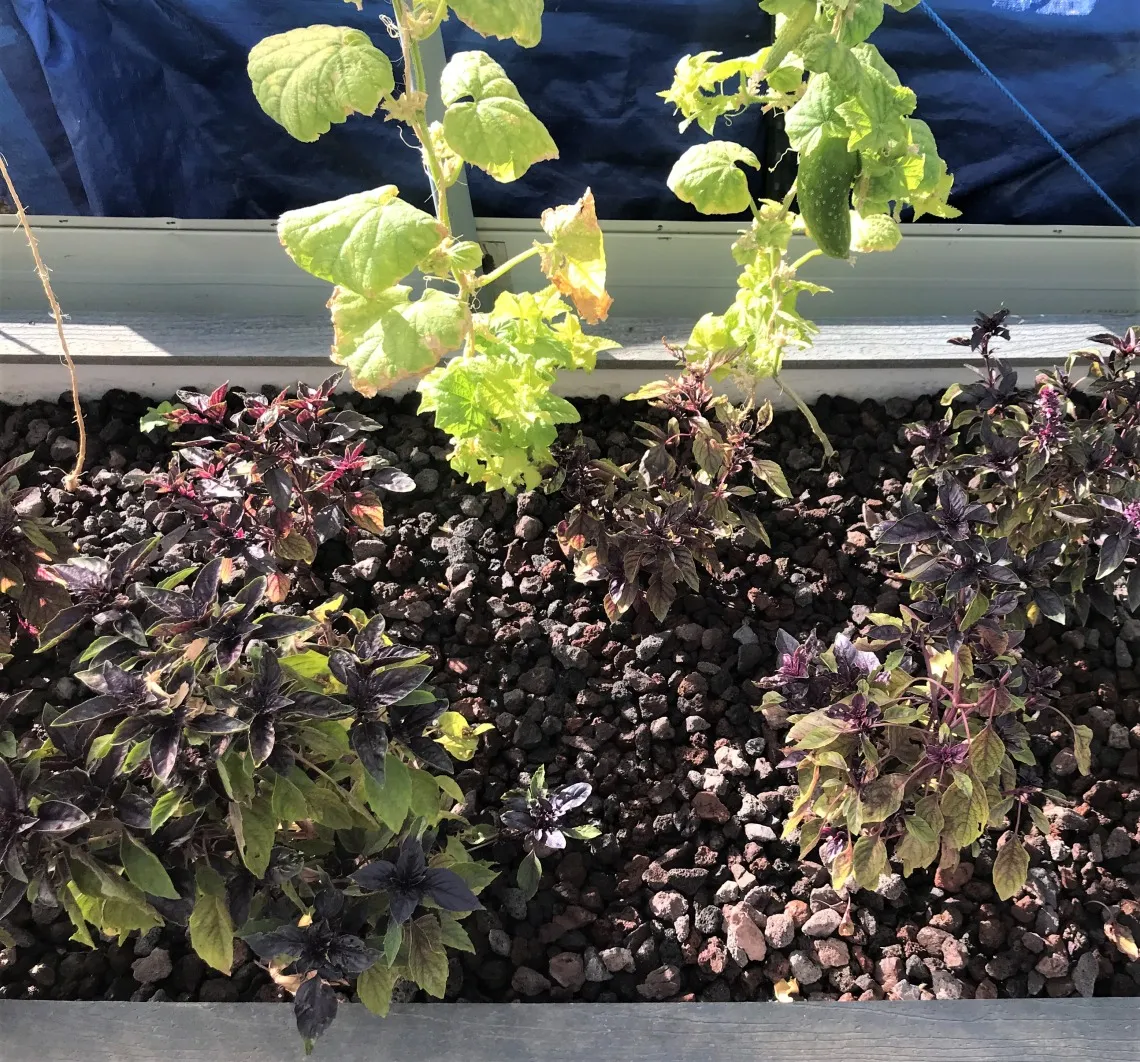All About Integrated Pest Management
Dec. 8, 2021
Image

My name is Jazz and I love working with plants. So much so, I have a collection of 159 houseplants at home! I worked at Awareness Ranch through the Earth Grant program for the Fall 2021 semester, and part of my work has been working with integrated pest management (IPM) techniques. Awareness Ranch is a small local grower, who uses aquaponics systems in greenhouses to produce herbs and vegetables. Since insects also thrive in the greenhouse environment, it is important to protect the plants from pests and disease. IPM allows us to control populations of “pest” insects, without using toxic chemicals.
These are some examples of IPM strategies:
- Trap cropping, also known as intercropping, is an effective form of integrated pest management. A trap crop acts as a decoy or sacrificial plant for invading pest insects, luring them away from your vegetables. Once the destructive insects attack the trap crop, you can deal with them there instead of on your valuable food crops. Techniques include removal or spraying with a soap-based solution or natural recipe, all the way up to using insecticides on the trap crop.
- Another technique that works are predatory insects, such as predatory mites (not to be confused with spider mites or any other “pest” mite), and ladybugs. These insects eat other insects, which reduces the need for pesticide use. Ladybugs are a predatory insect that help protect the crops at Awareness Ranch.

